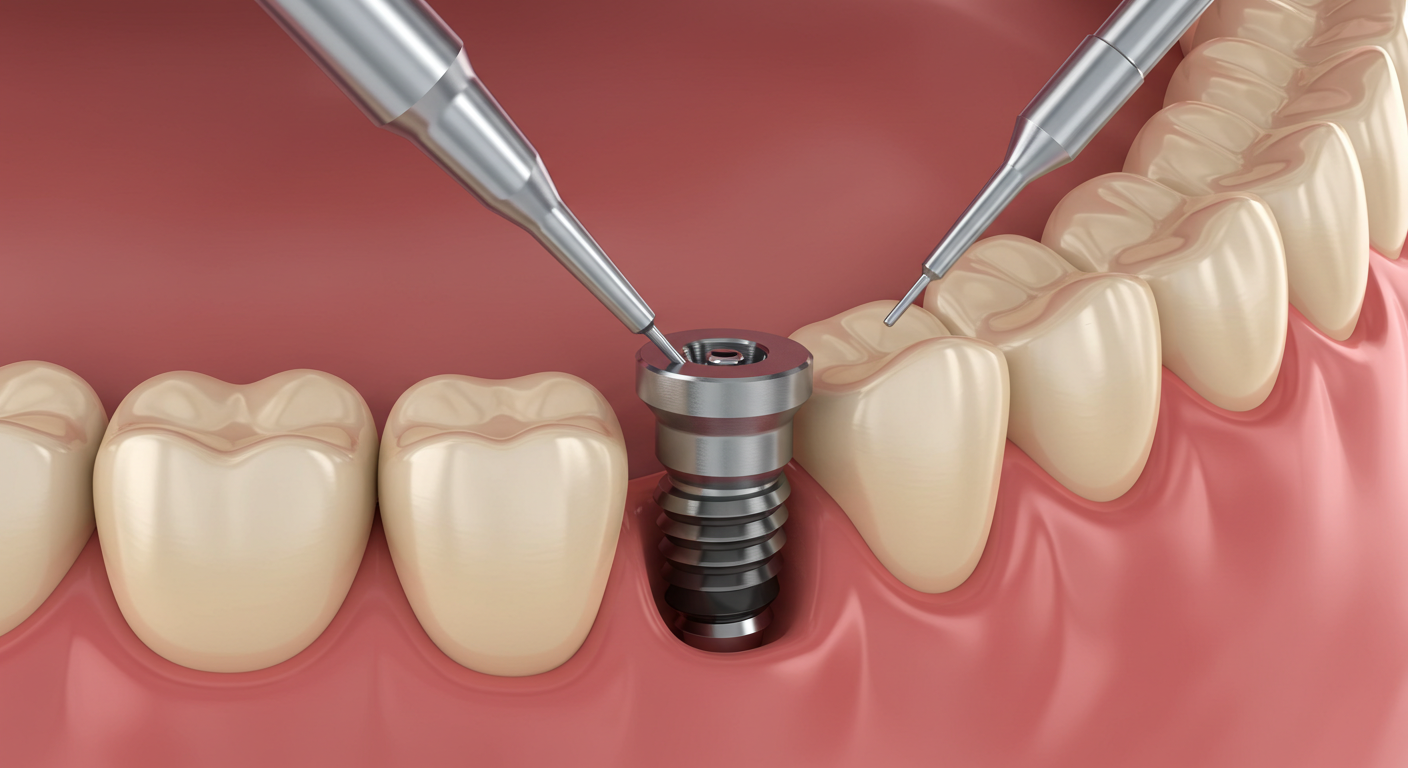Contents

Dental Implant Surgery: A Complete Guide to the Procedure
Dental implant placement is a standard medical procedure, performed under local anesthesia by an implantology specialist, which allows for the replacement of one or more missing teeth while preserving the integrity of neighboring teeth. The fundamental principle is based on inserting an artificial root that serves as a support for a future dental crown or prosthesis. The procedure is typically carried out in two distinct stages, involving a surgical placement followed by a healing period before the final restoration is attached.
What is Dental Implant Surgery? Definition and Principles
A dental implant is the most effective solution for filling a tooth gap, allowing patients to regain normal chewing function and the confidence to smile. This minor surgical procedure has a very high success rate when performed under optimal hygiene conditions with modern equipment. A dental implant serves to replace one or more missing teeth without compromising the surrounding healthy teeth. It is an artificial root, typically made of biocompatible titanium, designed to support a dental prosthesis like a crown or bridge.
Contraindications and Pre-Surgical Evaluation
A thorough pre-surgical evaluation is essential for success. Good general and oral health are required. Specific contraindications include:
- Uncontrolled chronic diseases like severe diabetes or heart conditions.
- Active cancer treatment or a history of radiation therapy to the jaw.
- Heavy smoking, which significantly impairs healing.
- Insufficient jawbone density, though this can often be addressed with a bone graft.
Your dentist or surgeon will perform a comprehensive assessment, including a 3D CBCT scan, to confirm your candidacy.
Understanding Potential Complications
Complications are rare and generally minor. The most common issue is post-operative infection, which is easily treated with antibiotics. The risk of implant failure (failure to integrate with the bone) is very low, typically under 5% in healthy individuals.
The Advantages of Dental Implantology
Dental implants offer several undeniable advantages:
- Proven effectiveness with success rates over 95%.
- Preservation of adjacent teeth, unlike a traditional bridge.
- Excellent durability, with the potential to last a lifetime.
- Superior aesthetic and functional results that feel like natural teeth.
Financial Aspects: Cost and Insurance
The cost of an implant varies based on the number of teeth being replaced, the materials used, and the complexity of the case. A detailed quote is always provided before treatment. Dental implants are considered a major procedure, and dental insurance may cover a portion of the costs, but a significant out-of-pocket expense often remains.
Prosthetic Options on Implants
Fixed Prosthetics
- The Crown: A single artificial tooth that covers the implant.
- The Implant Bridge: A multi-tooth restoration supported by two or more implants.
- The Full Fixed Prosthesis (e.g., All-on-4): A permanent, non-removable alternative to traditional dentures, supported by several strategically placed implants.
Removable Prosthetics (Overdentures)
This option involves a denture that "snaps" onto two or more implants for greatly enhanced stability. It is a more affordable implant solution than a fully fixed prosthesis and requires diligent daily cleaning.
What Are the Alternatives to Implants?
If implants are not an option, other solutions include:
- A conventional dental bridge, which requires grinding down adjacent healthy teeth.
- A removable partial denture with clasps.
Prevention: How to Avoid Needing Implants
The need for implants often arises from preventable issues like untreated cavities, gum disease, or trauma. To avoid these situations, maintain strict oral hygiene, brush and floss daily, wear a mouthguard for contact sports, and attend regular dental check-ups.
FAQ: Your Top Questions About Implant Surgery
The surgery itself is not painful because it is performed under effective local anesthesia. You can expect some post-operative discomfort, swelling, and bruising for a few days, which is typically well-managed with over-the-counter pain medication and ice packs.
The entire process typically takes between 3 to 9 months. This includes the initial consultation, the surgical placement of the implant, a healing period of 3-6 months for osseointegration (the implant fusing with the bone), and the final placement of the abutment and crown.
Osseointegration is the crucial biological process where the living jawbone grows directly onto the surface of the titanium implant, fusing with it to create a strong, stable, and permanent anchor. This is what makes dental implants so successful and durable.
